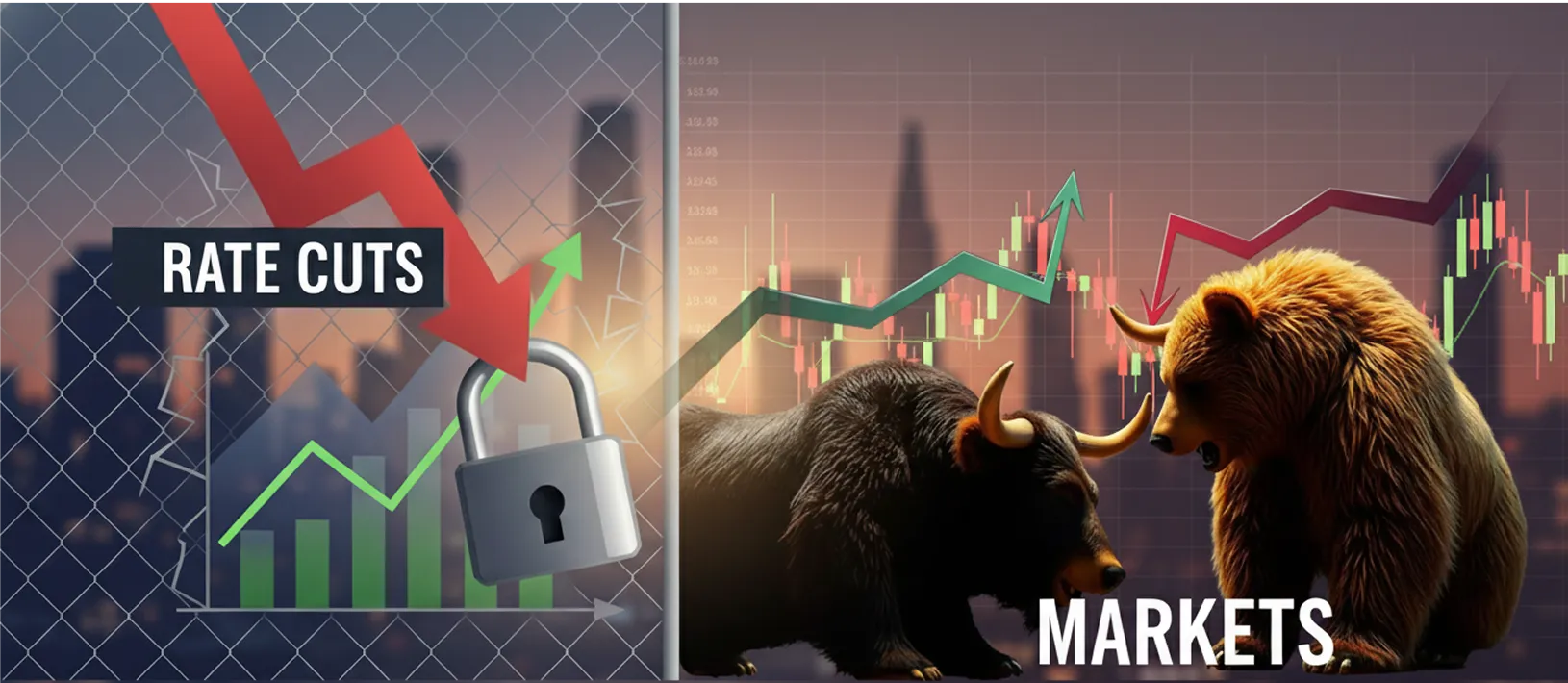As of 16th October, 2025, gold had delivered 61% gain for one year, 33% returns over 3 years and 18% over 5 years. When any asset is producing such a superlative performance, there is no shortage of ‘experts’ presenting a case as to why this will continue. It’s really difficult then to play a devil’s advocate to step a way from the crowd and look at factors that may halt the gold and silver rally. This is despite the fact that there are central banks diversifying from the dollar and adding gold, a looming sovereign debt crisis and tariff uncertainties. Add to this, we are celebrating Diwali where traditionally people like to add precious metals on an auspicious occasion like Dhanteras. But still let’s try to play a devil’s advocate with the help of following pointers:
1. No valuation base:
Today, people argue that gold’s 10-year CAGR of 16% has outperformed NIFTY 50’s 13% and it proves that gold is a better wealth creator in the long run. However, this comparison is flawed. If equity prices fall; the valuation metrics like Price to Earnings, Price to Book Value, Price Earnings to Growth become attractive providing sound argument to add allocation in favour of equities. But for gold there is no fundamental valuation metric as it doesn’t produce any cash flows and is priced purely from demand supply mechanism. Gold prices are driven by global risk factors and hence if the current worries around tariffs, sovereign debt crisis, and US slowdown reduce and/or go away, gold can see a sharp correction. The whole issue is there is no way one can predict when the risk perceptions will change.
In a growing economy like India, it is highly unlikely that the equity markets at large will go back to their values 10 or 20 years ago, because the underlying earnings of companies would have compounded over this period. However, gold and silver can very easily go back to their values 10 years ago because there are no underlying cash flows to put a floor to their prices. Take the example of Nifty50 index. The index value has moved up from 8,100 to 25,500 in the last 10 years. However, as index values have moved up, so have the underlying earnings of the Nifty50 companies. These earnings have gone up from about Rs 365 in October 2015 to Rs 1,130 in October 2025.
2. Fading demand for jewellery
Global gold demand comes from two main categories of buyers – consumers buying jewellery and investors buying bullion as an asset. This makes for very differing reactions to any surge in gold prices. When gold prices shoot through the roof, jewellery buyers (like all consumers) postpone or cut back on their purchases, waiting for the price to cool off. Therefore, whenever gold prices move into a new orbit, global jewellery demand shrinks. Investors on the other hand, like to chase outperforming assets. Therefore, as gold prices shoot up, ETF demand usually spikes up.
This is clearly evident from the data. Between 2012 and 2015, as global gold prices fell from $1670 a troy ounce to $1160, global jewellery demand rose from 2062 tonnes in 2012 to 2479 tonnes by 2015.
But between 2015 and 2020, global gold prices shot up from $1160 to $1769; this saw jewellery demand shrink from 2479 tonnes in 2015 to just 1331 tonnes in 2020. Jewellery demand has dipped from 2200 tonnes to 2026 tonnes between 2023 and 2024 as gold prices took off again. High gold prices also prompt households to trade in their old jewellery for cash or use recycling to buy jewellery.
3. Huge supply overhang
Unlike stocks, bonds or other industrial commodities, gold is not used up or consumed by those who buy it. Those who buy gold (in any form) just stash it in vaults or lockers. Therefore, most of the gold mined in recent history is still available as above-ground stocks with individuals, governments, central banks and institutional investors.
Gold is therefore the only commodity where liquidation of even a small portion of the above-ground stocks can easily meet demand, and put pressure on prices. This risk is unique to gold and is not present in any other asset class be it stocks, bonds, silver (as it also has mainly industrial uses) or industrial commodities.
4. Crisis can lead to liquidation
One of the main reasons to hold gold in the portfolio is that it serves as protection against adverse events – recession, war, geopolitical tensions, fear of sovereign default, bond and stock market crashes and so on. Gold usually rises when any of these crises is feared by the markets. However, the funny thing about gold is that when crisis actually hits, it is often the first thing that its holders liquidate to raise quick money.
In India, we know that when households run into an emergency or a debt crisis, they pledge or sell their jewellery to raise quick cash. Governments and central banks do the same thing. When governments get into an unsustainable situation on debt or balance of payments and are on the verge of default, they pledge or sell their gold stocks to raise lines of credit from IMF and other institutions. Today, fear of sovereign debt crisis hovers mainly around the US, UK, Japan and other advanced economies. The central banks of these countries are also some of the largest holders of gold reserves.
Given the quantum of money, they have locked up as reserves, central banks prefer return-generating assets like treasuries over physical gold. They are also cautious buyers of gold, adding stocks when prices are low and staying away when they are at historic highs.
Conclusion:
We have always maintained the importance of asset allocation and the main role of gold is that of portfolio insurance. If stocks and bonds crash due to unexpected events which we cannot control, gold shields your portfolio from falling too much. Silver is an even more erratic metal than gold. It is more an industrial commodity than a safe haven. Therefore, gold should act as portfolio insurance and not as a wealth compounder. You can consider a well-managed multi asset allocation fund and let the fund manager take the decision of entry/exit as far as gold and silver is concerned. This way, you are saved from the timing risk and can hold gold and silver in a tax efficient manner.
.png)











.svg)
.webp)
.svg)
.svg)
.svg)
.svg)